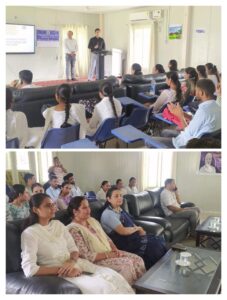International collaboration of physicists achieves first successful laser cooled Positronium, a short-lived atom significant for quantum studies

For the first time, an international collaboration of researchers has successfully demonstrated the laser cooling of Positronium, a short-lived hydrogen-like atom that provides an ideal testing ground for bound-state quantum electrodynamics.
The Antihydrogen Experiment: Gravity, Interferometry, Spectroscopy (AEgIS) collaboration has performed complex experiments at the European Organization for Nuclear Research (CERN) in order to obtain this breakthrough.
The results could pave the way for taking up advanced studies leading to improved understanding of the physical nature, comprising matter and antimatter facilitated through the interactions between light and charged matter.
Positronium is a fundamental atom that comprises an electron (e-) and a positron (e+). Electrons and positrons are leptons, and they interact through electromagnetic and weak forces. A usual atom is made up of a mixture of baryons and leptons. Since Positronium is only made up of electrons and positrons, and no usual nuclear matter, it has the unique distinction of being a purely leptonic atom.
Sadiq Rangwala, Professor, Light and Matter Group at Raman Research Institute (RRI), an autonomous institute of the Department of Science and Technology (DST) of the Government of India, is part of the AEgIS collaboration that comprises physicists from 19 European groups and one Indian group.
Professor Rangwala is leading the Indian effort in the AEgIS collaboration with key contributions in various areas including the design of diagnostics for laser beam alignment deployed in the laser setup at the CERN accelerator.
Even though this field has been under active research since the late 1980s, several technological innovations and manufacturing of cutting-edge lasers finally facilitated the laser cooling of Positronium.
Over the past several years, the AEgIS team performed multiple experimental runs at the accelerator hall of CERN. Here physicists had to introduce numerous technological and engineering solutions to achieve this goal.
Describing the challenge of designing the laser diagnostics, Professor Rangwala said, “The lasers were either deep in the ultraviolet or in the infrared frequency bands, thus made the overall laser alignment design a very challenging task.”
In the recently published paper in the Physical Review Letters, the AEgIS team has described the laser cooling of Positronium atoms achieved from ~380 Kelvin (106.85 degrees Celsius) to ~170 Kelvin (minus 103.15 degrees Celsius), using a 70-nanosecond pulsed alexandrite-based laser system.
“The experiment was done under the very challenging circumstances of an accelerator beam hall, rather than within the confines of a very well controlled laboratory. In every part of the experiment — be it the input beams, the lasers, laser alignment, timing and control systems, detection techniques, etc. required technological innovations to make the science a reality,” said Professor Rangwala, one of the co-authors of the paper titled ‘Positronium laser cooling via the 13S–23P transition with a broadband laser pulse’.
Laser cooling anti-atoms and their spectroscopic comparison is a critical and vital test for the Quantum Electro Dynamics (QED).
“This now opens doors to creating exotic many particle systems like the Bose Einstein Condensates of this unique system. This is an important precursor experiment to the formation of anti-Hydrogen in the AEgIS experiment, which has a long-standing goal to test the equivalence principle,” he added.
The AEgIS collaboration is composed of several research groups from CERN, Istituto Nazionale di Fisica Nucleare (units of Milano, Pavia and the Trento Institute for Fundamental Physics and Applications), the University of Oslo, the University of Liverpool, the Warsaw University of Technology, the University of Trento, the Jagiellonian University of Krakow, the Raman Research Institute of Bangalore, the University of Innsbruck, the University and the Politecnico of Milan, the University of Brescia, the Nicolaus Copernicus University of Torun, the University of Latvia, the Institute of Physics of the Polish Academy of Sciences and the Czech Technical University of Prague.





